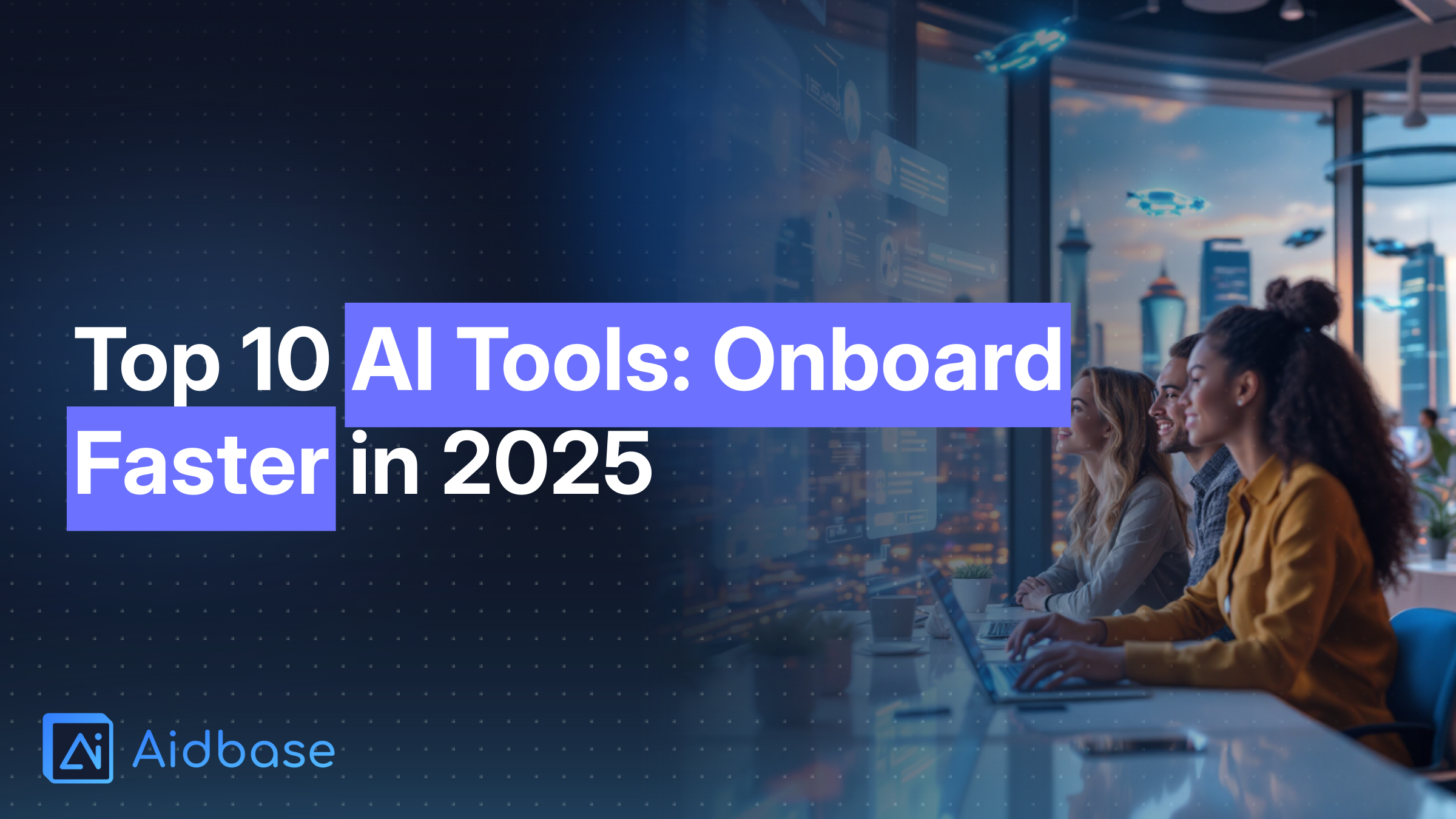The transition into a new role can be challenging, especially in remote and...

The transition into a new role can be a challenging process, especially in the dynamic world of remote and hybrid work. Today’s organizations are increasingly looking for ways to accelerate onboarding, ensuring that new employees feel welcomed, engaged, and productive right from the start. In this post, we’ll explore how artificial intelligence (AI) is revolutionizing onboarding, with detailed insights into the top AI tools that are speeding up employee integration in 2025.
Efficient onboarding is more than just ticking a checklist—it sets the tone for the entire employee experience. A well-structured onboarding process:
Research shows that leveraging AI-powered solutions in onboarding not only reduces manual errors but also ensures that the support is continuous and accessible at any time, addressing the needs of modern, distributed teams. For more insights, you can read about the transformative impact of AI in HR on Forbes.
The modern work environment is evolving rapidly. With a significant shift towards remote and hybrid work models, traditional onboarding practices are being put to the test. Current trends include:
AI tools are stepping in to address these challenges. For instance, platforms like Rippling streamline administrative tasks by automatically setting up email accounts and software access, ensuring that new hires have what they need right away. More details on how automation is reshaping onboarding can be found at aionboardingtools.com.
Artificial intelligence plays a pivotal role in transforming onboarding by automating repetitive tasks, providing personalized support, and generating actionable insights. Here’s how AI contributes:
AI solutions, such as those highlighted by Forbes and HR Lineup, are just the beginning of how technology is enabling a more responsive, agile onboarding process in today’s digital workplace.
Virtual chatbots have become one of the cornerstone tools in modern onboarding. These AI assistants offer:
For example, Leena AI uses autonomous agents to manage HR queries and onboarding processes, making sure that every employee’s question is answered promptly (Forbes).
A comprehensive, AI-powered knowledge base acts as a central repository of all critical onboarding information. Key benefits include:
This technology plays a crucial role in onboarding by ensuring that no employee is left in the dark, even in a remote work setting.
Personalized training pathways use AI to design adaptive learning experiences tailored to an individual’s role, experience, and learning style. This means:
Such tailored learning experiences result in higher employee satisfaction and effectiveness from the outset.
Paperwork can be a major bottleneck in the onboarding process. AI-driven solutions automate these tedious tasks by:
Companies using tools like Rippling have significantly cut down on the time spent handling administrative tasks, allowing HR professionals to focus on building a supportive and engaging onboarding environment.
Data-driven insights are crucial for evaluating the effectiveness of onboarding initiatives. Engagement analytics help organizations to:
By leveraging AI, companies can create a continuous feedback loop that informs adjustments to the onboarding process, ensuring its evolution in line with employee needs.
Gamification is increasingly being incorporated into onboarding strategies to make learning more engaging and less monotonous. AI-driven gamification tools offer:
Gamification ensures that the onboarding experience is not just informative but also enjoyable, setting a positive tone for the employee’s journey ahead.
Effective onboarding is an evolving process that benefits greatly from continuous feedback. AI tools can:
Continuous feedback loops ensure that onboarding programs remain dynamic and aligned with the real-world experiences of new employees.
A fragmented approach to onboarding can lead to inefficiencies and confusion. Integration tools powered by AI ensure that all systems—HR software, knowledge bases, communication tools, and training modules—work in sync. Benefits include:
By connecting disparate systems into one cohesive experience, organizations can ensure that new employees receive a smooth and efficient onboarding experience.
Visual learning is particularly effective for remote onboarding. AI-powered video solutions like Synthesia are creating a new standard in training materials by:
By incorporating visual elements, organizations can cater to diverse learning styles and ensure that remote employees are as well-equipped as those onsite.
Predictive analytics is transforming onboarding by forecasting potential challenges and customizing support accordingly. This involves:
The strategic use of predictive analytics not only improves the efficiency of onboarding but also personalizes the experience to better meet the evolving needs of employees.
Among the many AI tools available, Aidbase stands out with its advanced chatbot capabilities geared towards optimizing the onboarding journey. By seamlessly integrating with existing HR systems, Aidbase ensures that new employees receive immediate and accurate support. Its dynamic interface simplifies FAQ handling and guides employees through complex processes, making it an invaluable resource during the initial days of a new hire’s journey. Learn more about what Aidbase has to offer by visiting Aidbase.
The digital transformation of the workplace is not a distant dream—it is here, and AI is at the forefront of this evolution. From virtual chatbots and AI-powered knowledge bases to immersive video training and predictive analytics, modern onboarding tools are designed to enhance efficiency, boost employee engagement, and create a seamless transition into new roles. As organizations continue to embrace remote and hybrid work models, the integration of these advanced AI solutions is set to become a standard practice. Embracing these innovations today ensures that your workforce is not only prepared for the challenges of tomorrow but is also empowered to excel from day one.
In a rapidly changing landscape, leveraging AI-driven tools is a strategic investment in employee success and organizational growth. The future of onboarding is digital, data-driven, and incredibly human-centric, setting the stage for truly transformative workplace experiences.